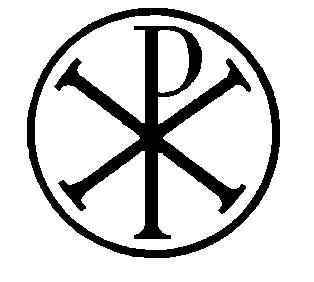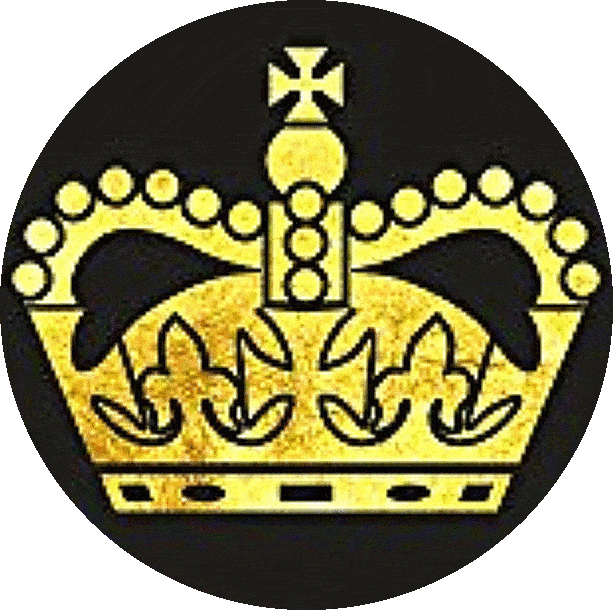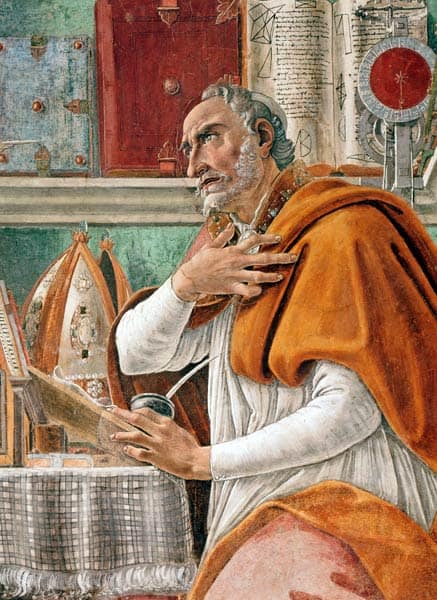Growth of the Church, 100-500 AD
The Apostolic Fathers
Toward the end of the First Century AD, gatherings of believers were becoming organized throughout the lands surrounding the Mediterranean Sea and beyond. The writings that became canonized as what we call the New Testament had all been written, preserved, and disseminated. Congregations of believers (ekklesia) were becoming more organized in their leadership and practices. Several leaders who are believed to have personally known some of the Twelve Apostles, or to have been significantly influenced by them, had emerged and became known as the Apostolic Fathers. This group included Clement of Rome, Ignatius of Antioch, Polycarp of Smyrna, and Barnabas as well as others, Their writings from the First and Second Centuries AD, which included the anonymous Didache (“Teaching”) and Shepherd of Hermes of unknown authorship, were popular in Early Christianity but did not become part of the canon of the New Testament.
The Apostles’ Creed ~ 190 AD
The word Creed derives from the Latin Credo which means ‘I believe’. Dating perhaps from as early as 190 AD, the Apostles’ Creed was well-established by the Fourth Century. Because of the early origin of its original form, it does not address some theological issues defined in the Nicene and other Christian Creeds. It thus says nothing explicitly about the divinity of either Jesus or the Holy Spirit. Nor does it address many other theological questions which became objects of dispute centuries later. It is reproduced below in a faithful contemporary ecumenical translation.
I believe in God, the Father almighty, creator of heaven and earth. I believe in Jesus Christ, God’s only Son, our Lord, who was conceived by the Holy Spirit, born of the Virgin Mary, suffered under Pontius Pilate, was crucified, died, and was buried; he descended to the dead. On the third day he rose again; he ascended into heaven, he is seated at the right hand of the Father, and he will come to judge the living and the dead. I believe in the Holy Spirit, the holy catholic Church, the communion of saints, the forgiveness of sins, the resurrection of the body, and the life everlasting. Amen.
Persecution of the Ekklesia
From the very beginning through the arrest, trial, and crucifixion of Jesus, those who came to believe in Him were prone to suffer persecution at the hands of their communities, first among the unconverted Jewish authorities in the Holy Land and later among those in “Samaria and the outermost parts.” Official persecution within the Roman Empire began in 64 AD when Emperor Nero blamed Christians for the Great Fire of Rome, after which both the Apostles Peter and Paul were executed in Rome.
However, subsequent persecution in the Roman Empire was more local and sporadic during the next 250 years until what became known as the Great Persecution began in 303 AD and lasted 8 years under the reign of Diocletian. It was during this time that the world was given the graphic display of Roman Christians being arrested, tortured, mutilated, burned, starved, and condemned to gladiatorial contests to amuse spectators. Instead of suppressing the growth of the Ekklesia, these draconian measures only served to deepen and disseminate the convictions of the believers, and the number of Christians grew rather than shrinking.
Recognizing the futility of their campaign, the Romans reversed course, and in 311 Senior Emperor Galerius (Diocletian had arranged to have Rome ruled by a “Tetrarchy” of 4 geographical emperors at the time) issued the Edict of Toleration which recognized the right of every Roman citizen to worship the gods of their own choice, including the God of Israel and His Son Jesus.
Emperor Constantine’s vision in 312 AD
The year after the Edict of Toleration was issued, Constantine – a Western Empire signatory of the Edict of Toleration – reportedly had a experience at the Battle of Milvian Bridge in which he looked upward to the sun and saw a bright cross of light in the sky accompanied by a banner with the Greek words Ἐν Τούτῳ Νίκα (Latin In hoc signo vinces or “In this sign, you will conquer!”) emblazoned on it. He interpreted this as a message from the Sun God, ordered that the shields of all his soldiers be adorned with the Chi-Ro cross of Christianity, and went on from victory to victory. Seeing this as a clear sign of favor, he worked with a co-regent, Licinius, to issue the Edict of Milan which expanded toleration of Christians to include restitution for their past persecutions.

The Chi-Ro Cross
Constantine’s faith and influence
Constantine went on to become a politically savvy and motivated Emperor who promoted the public expression of Christian faith, fostered unity within the Christian community by convening the First Council of Nicaea in 325, and underwrote the construction of Christian houses of worship through taxation, even while committing barbaric acts inconsistent with genuine faith. Although his identity and historical role as a converted Christian remains highly questionable, he apparently ultimately abandoned traditional Roman polytheism and was baptized shortly before his death.
Many have interpreted the influence of Constantine as a major positive move in the advancement of the Christian faith. However, Constantine’s methods were highly syncretistic, and there are many long-term downsides to what happened during this time. Christian faith turned from being a costly liability politically to becoming an amalgamated asset that came with social power, privilege, and prestige attached to it. The understanding of the Ekklesia being a gathering of called out and spiritually converted believers became mingled with ideas of social membership, structure, and organization – of buildings, laws, creeds, and hierarchies of power and authority – that resembled those of human empire.
The resulting centralized Roman Catholic Church with its worldly political power, regal buildings, pomp and circumstance, human councils, church rules and regulations (canon laws), and leaders established in a pyramidal authority structure became a model for the development of virtually all denominational practices in the years to come. The visible Church became an updated version of the nation of Israel that Samuel had tried to warn God’s people about when they cried out for him to ordain a human king for them. Little wonder is it that the nominal Christianity of the now-official Church and its heirarchy was able to eclipse the spiritual rebirth that had been the hallmark of membership in the Ekklesia and that the doctrine of supersessionism or replacement theology was able to take root.
A unifying result – The Nicene Creed of 325 AD
We believe in one God, the Father, the Almighty, maker of heaven and earth, of all that is, seen and unseen.
We believe in one Lord, Jesus Christ, the only Son of God, eternally begotten of the Father, God from God, Light from Light, true God from true God, begotten, not made, of one Being with the Father; through him all things were made. For us and for our salvation he came down from heaven, was incarnate of the Holy Spirit and the Virgin Mary and became truly human. For our sake he was crucified under Pontius Pilate; he suffered death and was buried. On the third day he rose again in accordance with the Scriptures; he ascended into heaven and is seated at the right hand of the Father. He will come again in glory to judge the living and the dead, and his kingdom will have no end.
We believe in the Holy Spirit, the Lord, the giver of life, who proceeds from the Father and the Son, who with the Father and the Son is worshiped and glorified, who has spoken through the prophets. We believe in one holy catholic and apostolic Church. We acknowledge one baptism for the forgiveness of sins. We look for the resurrection of the dead, and the life of the world to come. Amen
St. Augustine of Hippo, 354-430 AD
St. Augustine was an influential Christian theologian from Numidia (modern-day Algeria). Augustine converted to Christianity in 386 and wrote extensively on Christianity. In particular, he emphasized the doctrine of original sin, the importance of grace, and the Holy Trinity.
After a hedonistic early adulthood, Augustine was inspired by reading about the life of St. Anthony of the Desert and made a formal conversion to Christianity in 386 at the age of 31. He reported hearing an inner voice which told him to take up the Bible and read and was drawn to a passage by St. Paul (Romans 13:13-14) which was aimed at non-believers becoming transformed. He wrote an account of his conversion in his text Confessions and went on to become an influential bishop, theologian, teacher, and author of numerous theological treatises.
The City of God is one of Augustine’s most well-known works, written over a period of 14 years from 413-427 after Alaric and his pagan Visigoths sacked Rome in 410 AD, in part as a defense against those who blamed the Christians for the sack of Rome.
Augustine’s view of the Church
In The City of God Augustine elaborates a Scriptural perspective that distinguishes the visible organized Church from the invisible society of believers that is more nearly representative of the Kingdom (or City) of God. As summarized by Derek Michaud, Augustine formulated his philosophy in terms of an ancient and on-going struggle between two societies: the heavenly city, or city of God, as symbolized by Jerusalem, and the earthly city whose symbol is Babylon. The city of God consists of the elect among humanity and of the holy angels, while the “city of men,” i.e., the earthly city, is made up of all those angels and humans who are in rebellion against God. The two are characterized by their respective loves, whether it is love of God or love of self apart from God.
Augustine viewed the two societies as intermingled to some extent in this life. The image he commonly used to express this mingling of the two cities is from the parable in Matthew 13:24-30 where Jesus compared the kingdom of God to a field of wheat in which an enemy has sown weeds, or tares. While the true church consists of the elect throughout all ages, the church as a visible institution has within it both those whose first love is God and those whose first love is self, i.e., both wheat and tares. Further, there are some outside the church, as Augustine once was, who love God but have not yet embraced Christianity. The two societies will be separated only at the final judgment.
Although Augustine’s philosophy of history does acknowledge history’s culmination in a bodily resurrection and a final judgment, his eschatological vision differs markedly from that found in most of the New Testament.
In the spring of 430 another Germanic pagan group, the Vandals, invaded Roman Africa. Augustine fell ill and died on 28 August 430. The Vandals returned to Hippo in what is now modern Algeria and burnt much of the city, though Augustine’s library survived. Click here to read more about Augustine’s life.

 Kingdom Insights #8
Kingdom Insights #8 
The Church. We all think we know what we mean by church. It’s a religious organization, usually Christian of some sort, that has structured leadership, a place of religious activity, and members who support it financially and with their participation. It could have priests or ministers, an altar inside and steeple outside, and a set of beliefs. We go to church. In the Bible the underlying Greek word for “church” is “ekklesia” which means “the called out ones” and has nothing to do with a building or structure. It’s all about people who have heard the call of God to come out of their thralldom to the world and and become united in following Jesus as their Lord and Savior. Inside our “church” buildings we have those who have been “called out” in this way and others who haven’t. Which group do you belong to? And when you come across the word “church” in your Bible reading, try substituting “ekklesia” for it and see how it changes the meaning for you.
“The LORD has established His throne in the heavens, and His kingdom rules over all.” Psalm 103:19
Early life of St. Patrick
Patrick (c. 385~493 AD, dates very uncertain) was born into a wealthy Roman family in Scotland during the reign of Emperor Theodosius. When he was sixteen years old, he was captured by Irish slave raiders and sold to a farmer in western Britain where he served for 8 years. After praying earnestly he heard a voice speaking to him in a dream: “You have fasted well—soon you will be going home.” The next night, as Patrick slept, he heard the voice again: “Behold, your ship is ready.” He ran away the next day and headed for a shipping port on the other side of the island. However, there was a gap of at least twenty-five years between his escape and his return about which we know little, and when he did return he was clearly established in his Christian faith.
Patrick’s return to Ireland ~ 432 AD
It was probably in the summer months of 432 or 433 that Patrick and his companions landed at the mouth of the Vantry River close by Wicklow Head. He felt that he was called by God to return to Ireland and spread the Christian faith and had been sent by the Pope to be a missionary to the Irish people. He spent his last 30 years there, baptizing pagans, ordaining priests, and founding churches and monasteries. His persuasive powers must have been astounding: Ireland fully converted to Christianity within 200 years and was the only country in Europe to Christianize peacefully. Patrick’s Christian conversion ended slavery, human sacrifice, and most intertribal warfare in Ireland.
Some believe Patrick died in Ireland, on March 17, 493. Other sources say that the year he died could have been in the early 460s. There are many exaggerated and fanciful legends about St. Patrick involving shamrocks, leprechauns, driving snakes out of Ireland, and the like which accompany annual St. Patrick’s Day celebrations on March 17, but the truth is far more powerful. Click here for a timeline of Patrick’s life and here for an historical account that examines some of the background that underlies what we know about his life.
Roman Empire Falls in 476
In September 476 AD, the last Roman emperor of the empire in the west, Romulus Augustulus, was deposed by a Germanic prince called Odovacar, who had won control of the remnants of the Roman army of Italy. He then sent the western imperial regalia to Constantinople. The Roman empire in western Europe – a centralized superstate which had been in existence for 500 years – had ceased to exist, its single emperor replaced by upwards of a dozen kings and princes.
Click here for 8 reasons for the fall or here to read more of Dr. Peter Heather’s account.
Did the Irish save Western Civilization?
In 1995 Thomas Cahill published an engaging book called “How the Irish Saved Civilization” in which he proposed and defended the thesis that Western (Christian) Civilization was resuscitated and revitalized in the centuries after the Fall of Rome by missionaries dispatched from the Irish Christendom of Patrick to the European continent. His book was so well received, although not without its critics, that Cahill embarked on an author’s voyage of study and writing a series called “The Hinges of History” in which he has written five more historical books about the development of Western Civilization with a final seventh book in progress. The scope of his series so far goes from “The Gift of the Jews” through “Why the Greeks Matter” to “The World Before and After Jesus” and on through the Middle Ages and Reformation, essentially covering much of the historical territory in the central portion of His Kingdom and Us. I enjoyed his first book enough to make me want to find time for his others.
Navigation Notes
By continuing to use the Up and Down buttons in the middle you can navigate directly through our timelines. For each timeline we have been taking a detour using the side buttons to investigate events and topics noted in the currently active charts. In this detour we have been looking on our side excursions more closely at the remarkable start, expansion, growth and organization of the Ekklesia or Church over the centuries since the birth, ministry, death, and resurrection of Jesus of Nazareth. Now we move on to changes in the world.



